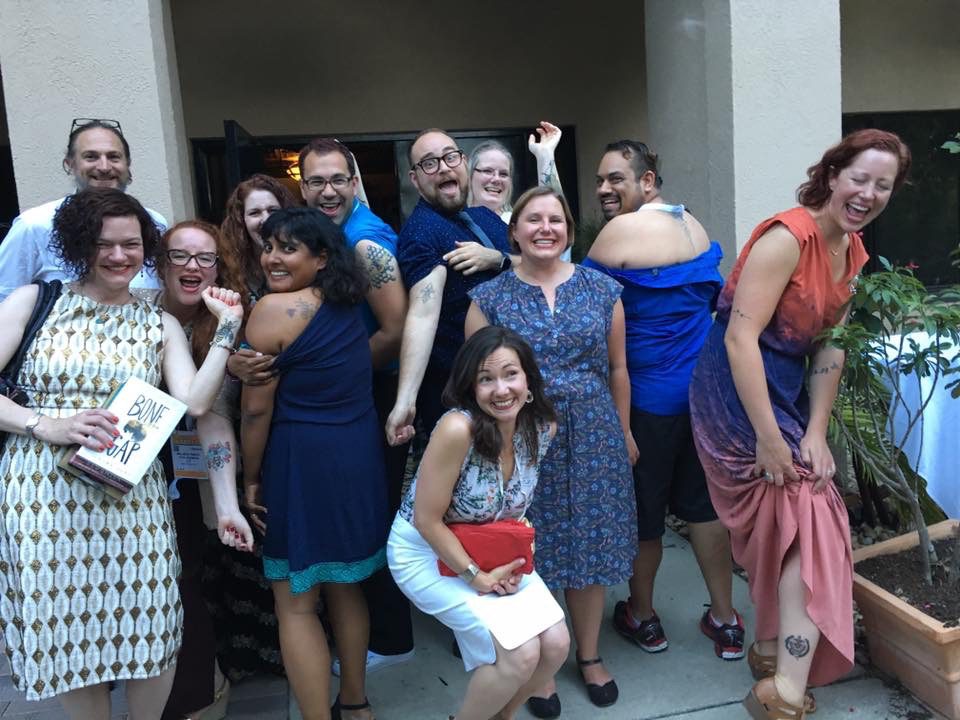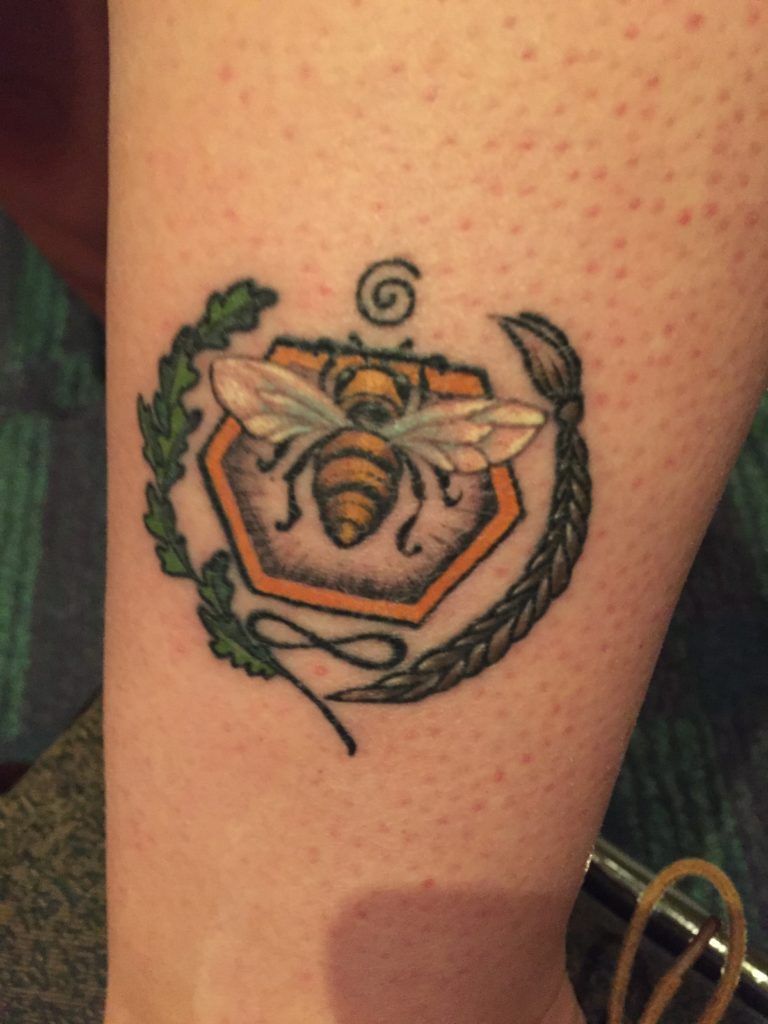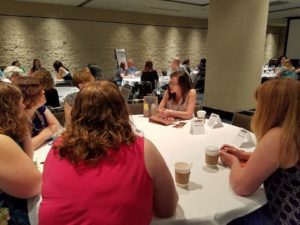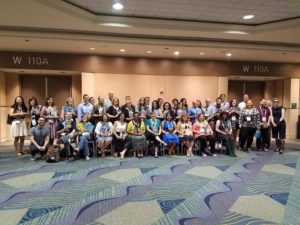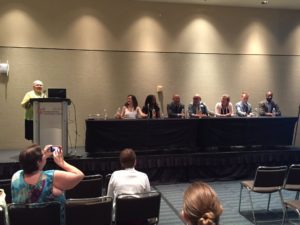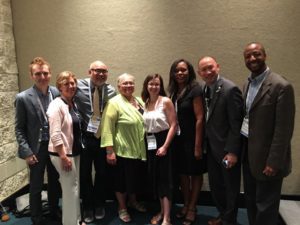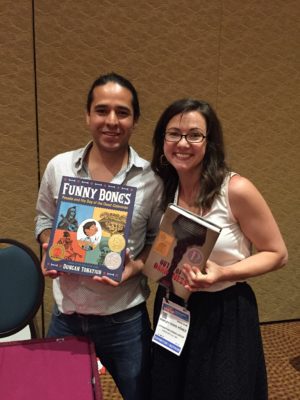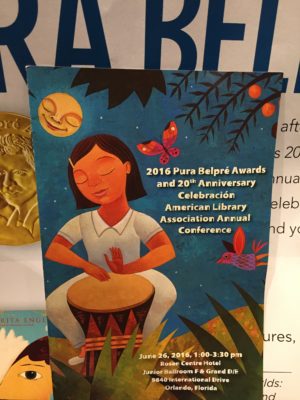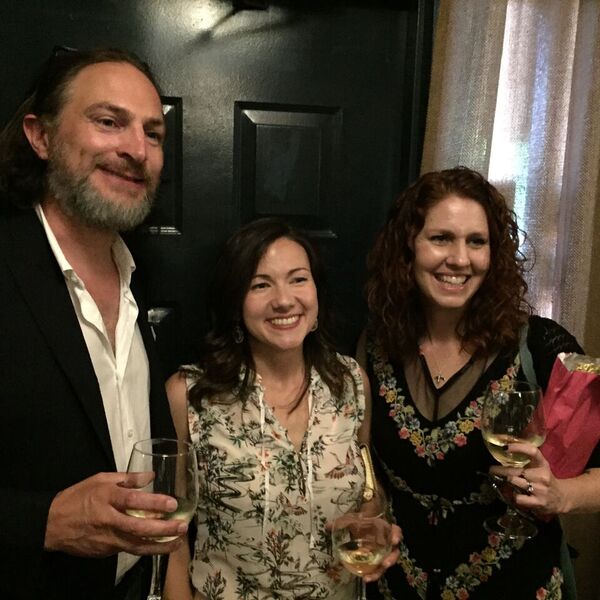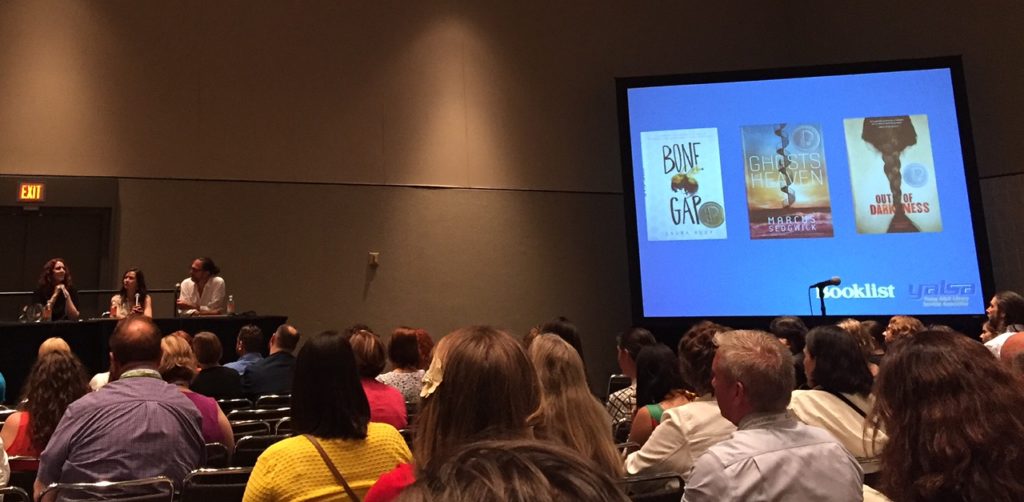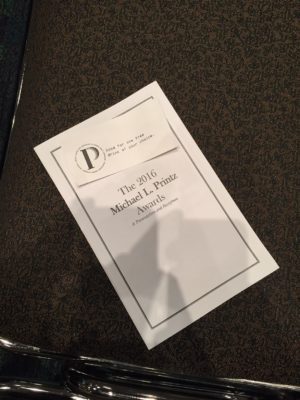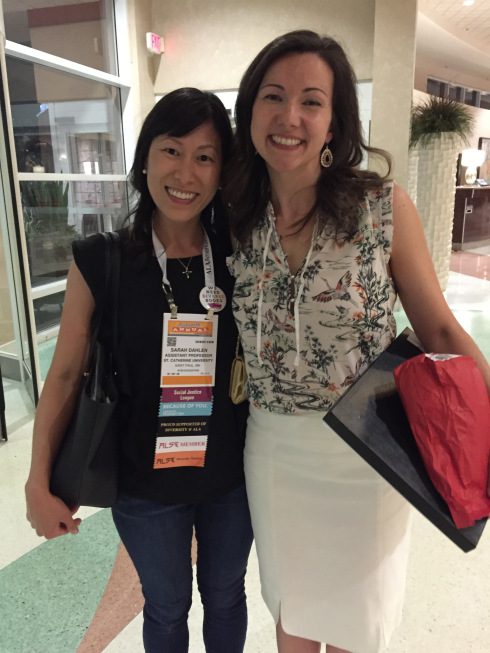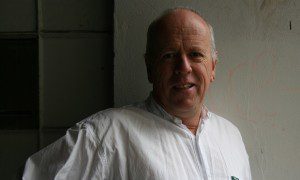I think I’ll just let the video speak for itself. Fed up with school book bans and school board meetings that look like day-time talk shows. Even more fed up with the resulting attacks on authors, librarians, and teachers. Beyond fed up with what all of this means for students.
What Creative Recovery Looks Like
You know the scenario. A writing project you care about gets derailed by family drama, work woes, a relapse of depression, a rough election, or some other configuration of challenges that life throws at you.
And suddenly you lose your connection with your project. You’re not working, and you feel shame for not working, and the shame of not working makes it harder to work. How do you get back in?
As you might have guessed, I am speaking from experience. Each creative recovery looks different, and it often will involve some recovery/care in other areas of life (mental health, relationships, y’all know…). But you will also need to find concrete ways to restart the creative work. Here’s what that has looked like for me this time: 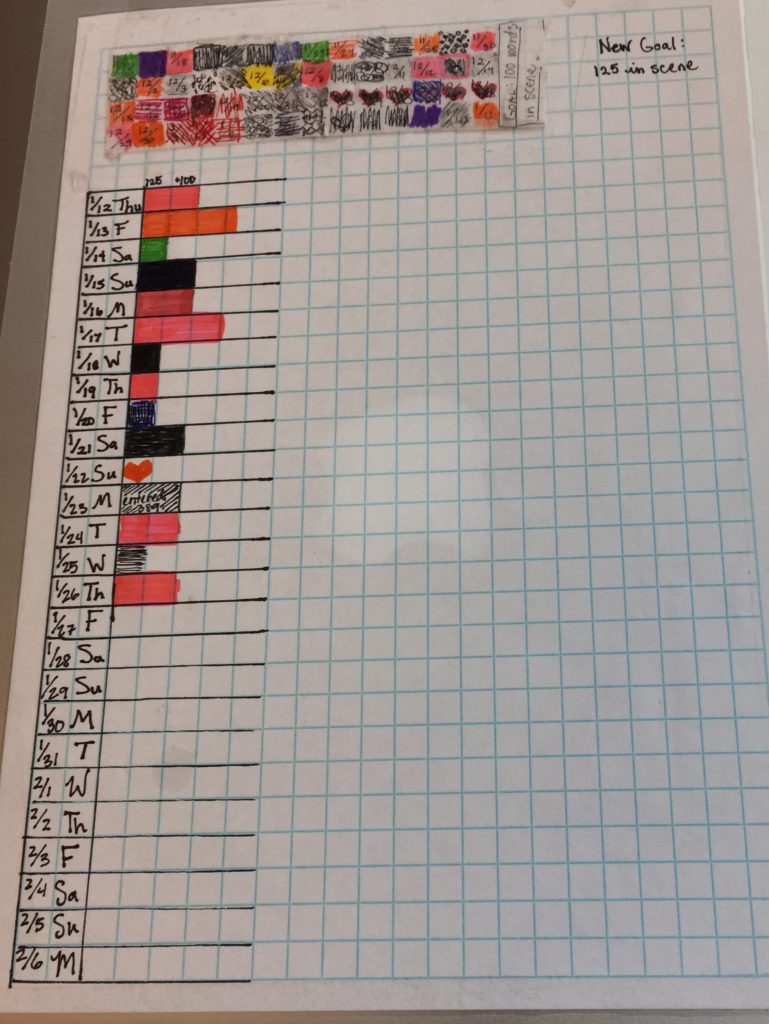
What is this, you ask? It is a visual tracker of my effort (beginning 11/16) to overcome creative paralysis. My strategy has been to set a very small, easily achievable daily goal. My specific goal came from a writer friend (thank you, Alisa Alering!): write 100 words in scene for the new novel each day. This is a goal so modest that it could be completed in fifteen minutes, and that’s the beauty of it. Even in my mad and maddening life configuration, I can find fifteen minutes to keep this promise to myself.
When I succeeded for two months, I bumped the goal up to (gasp) 125 words. You might wonder, why not shoot for a higher word count now that I’ve been doing so well?
Creative recovery is a delicate thing. It can collapse under the pressure of overly weighty expectations. The goal is faithfulness. The goal is gentleness. The goal is to keep the promise and build momentum at a time when it’s easy to feel paralyzed, ineffective, exhausted.
Small gains are better than no gains. Staying connected with a project even during times of difficulty lays the groundwork for periods of more intense and focused work. If you need more ideas for getting back on track, I recommend the gentle and inspiring The Artist’s Way by Julia Cameron. I’ve been rescued by this book many times.
Wishing you all peace and productivity.
Words from a First-Time Demonstrator
 Sunday, at the age of 32, I went to my first demonstration. My husband and I took the kids and gathered with about 500 neighbors for a peaceful, family-friendly vigil and march. Our goal: to come together in response to acts of intimidation and intolerance in Columbus. We wanted to show that there’s no place for hate in our community.
Sunday, at the age of 32, I went to my first demonstration. My husband and I took the kids and gathered with about 500 neighbors for a peaceful, family-friendly vigil and march. Our goal: to come together in response to acts of intimidation and intolerance in Columbus. We wanted to show that there’s no place for hate in our community.
Whatever your political views, here’s why you should seek opportunities to speak up, create, and act with your kids to affirm diversity and take a stand against racism and hate.
Kids need context. As in other moments in history, present economic and political tensions have combined with racism to cause some people to blame shared problems on specific groups and to take this moment as an opportunity to lash out against them. Tell your kids that this is wrong, and that when we hear it or see it directed at ourselves or others, we speak up.
Kids need to know we stand against racism, scapegoating, and hate. With the talk and images that are circulating, we need to name racism and intolerance as real, dangerous, and unacceptable. To stay silent, even with our kids, is to normalize hate. We need to make plain that it is not “just words.” Now, more than ever, we are seeing that words can do damage, both directly and indirectly, and that’s something to talk about. At home, we have been talking a lot about how respecting a political office does not mean accepting hateful speech from the person who has achieved that office or his supporters.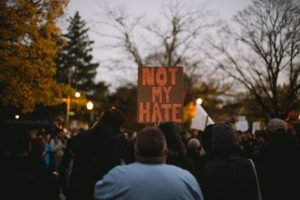
Kids need to know we stand for diversity. We’ve been making a point of talking with the boys about faith traditions and cultures different from our own as well as sharing the range of stories that can exist within any particular community. This matters especially for those groups that have been maligned and targeted, including Muslims, Latinxs, immigrants, LGBT people, and victims of sexual assault.
Thanks to hearing chants at the vigil, including “Education, not deportation!” and ”
No hate, no fear, immigrants are welcome here!” Liam Miguel had great questions about what it means to be an immigrant. That was an opportunity for us to share that, with the exception of American Indians, all family stories in America began with immigration. Talk about the numerous motives for immigration and the still more numerous reasons for welcoming others into our communities.
Kids need to know that we are not alone. We can come together in support for each other and in commitment to protect the rights of the most vulnerable. My older son was beaming as he marched, and I know that part of that joy was that he had a chance to join his classmates, teachers, and neighbors to send a powerful message.
Kids need to know that they can act. Creating positive posters might seem like a small thing, but it gave Liam Miguel and me time to talk about what has been happening. It was one of the most powerful experiences I’ve ever gotten to share with him. We talked about things we might write or draw, and he was able to understand how some things we might agree with wouldn’t work (e.g. the regular American flag) because right now they are also being used by some folks connected to hate speech. And he got it–that a message is not just in the text but in the context as well.
Working on something together that has a positive goal or helps others can give kids—and us—agency at a time of overwhelming uncertainty.
Kids need words of strength. By seeing the beautiful signs promoting diversity and love—and challenging injustice—kids at the march saw the power of words for positive change. Liam Miguel stood with me when one of the organizers asked me to speak at the beginning of the meeting. The speaker wasn’t loud enough to reach the back of the crowd, but I know that my most important audience, the little guy beside me, could hear. Here’s what I wrote to share.
Words from a First-Time Demonstrator
Many of us are working through grief and disbelief and anger.
Some of us are stunned and frightened by what we are seeing in our communities, reports of hate, intolerance, and racism. Others of us knew and heard and felt this ugliness long before the election season.
Some of us are new to this fight. Others have never had the luxury of not fighting.
For all of us, it is clear that we have a lot of work to do.
There are people out there now who see this election as license to injure and demean.
We will stand up to them, and we will stand with all those who have been vilified and scapegoated. We reject hatred and blame. We reject verbal and physical attacks. We reject all efforts to demean or diminish or terrorize.
We may be angry, but we will not hate. Instead, we’re here to show what we embrace. We affirm the beauty of human diversity. We honor all kinds of love, all kinds of families. We believe that deep differences enrich us instead of dividing us.
There are also people out there now who are blind to the injury they inflict or that is being inflicted around them.
I believe—I have to believe—that they have hearts capable of growing and minds that can change. These are the people we want to win over. These are the people we talk to and listen to with as much patience as we can muster.
In this work, we need to be passionate… and compassionate. We need to be outspoken for what’s right while also being capable of listening, guiding, making a path into new ways of being in community. We need to remember that we’re working on ourselves, too. We need to learn from people who’ve been doing this work longer than we have.
We need to answer human brokenness with human connection.
Let’s walk together.
Let’s care for each other.
Let’s reach out to our neighbors here and beyond our town.
Let’s be a place of sanctuary, because the need is already there, and it’s going to get bigger.
Let’s organize, advocate and act.
Let’s keep showing up, keep standing up, keep speaking up because there is no place for hate in our hearts, and there is no place for hate in our community.

* This post was originally written for Latinxs in Kid Lit. Visit our blog to discover a world of Latinx children’s and young adult literature.
Images from the 2016 Américas Award celebration
On September 22, 2016 I had the privilege of receiving the Américas Award for Out of Darkness. What an honor to get to speak at the Library of Congress–and to spend time with Alma Flor Ada and Pam Muñoz Ryan! I loved presenting to teachers and students in the Washington D.C. area, too! Here are a few of my favorite photos…
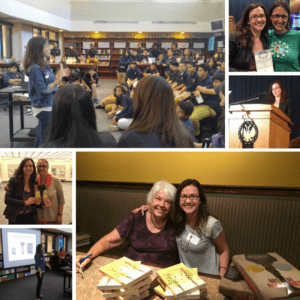
My Printz Came!
In case you missed the ALA Youth Media Awards, here’s my big news: Out of Darkness received a Printz Honor!

I was already over the moon after having a New York Times Sunday book review of Out of Darkness and seeing it on the (short!) Best Books of 2015 list from School Library Journal and the Kirkus Reviews Best Fiction of 2015 list. And Out of Darkness has spots in two important Texas Library Association lists as a TAYSHAS Top 10 pick and as part of the Spirit of Texas reading program.
But this… this… it’s just another level of wonderful. What I’m most excited about is the prospect that the Printz Honor may help Out of Darkness enter conversations beyond the Latin@ kid lit community and its allies. I want this, and other stories from the margins of history and of mainstream US culture, to weigh on the hearts of readers of all backgrounds.
I’m also thrilled for the wins and honors of Latin@ writers and illustrators, especially the wonderful Matt de la Peña, Margarita Engle, and Meg Medina. Latin@s in Kid Lit has a post that hollers felicidades in all the right directions. So proud.
Advancing the diversity conversation
 It’s been a rowdy few weeks in online discussions of diversity in YA and children’s books. I was just getting my thoughts together about Meg Rosoff’s dismissive-shading-to-hostile-shading-to-defensive response to an important contribution to children’s literature. (Read Edi Campbell’s post, which includes Rosoff’s Facebook remarks, and see Deb Reese’s post here for a list of many responses to Rosoff from the YA community.) And THEN this past weekend Michael Grant came out with a self-congratulatory catalog of ways he’s promoted diversity by including characters from many backgrounds in his fiction.
It’s been a rowdy few weeks in online discussions of diversity in YA and children’s books. I was just getting my thoughts together about Meg Rosoff’s dismissive-shading-to-hostile-shading-to-defensive response to an important contribution to children’s literature. (Read Edi Campbell’s post, which includes Rosoff’s Facebook remarks, and see Deb Reese’s post here for a list of many responses to Rosoff from the YA community.) And THEN this past weekend Michael Grant came out with a self-congratulatory catalog of ways he’s promoted diversity by including characters from many backgrounds in his fiction.
My first reaction to all this has been incredulity. I guess prejudice, opportunism, and showmanship are not just for the Republican primaries any more!
But I keep reminding myself that, however blatant the dysfunction of Rosoff and Grant’s remarks, they also do something useful for those of us who care about meaningful diversity in fiction and in publishing (you know, the REAL WORLD of agents, editorial boards, publicity offices, awards, and author lists).
First, they surface assumptions held by many out there, including quite a few teachers, librarians, and other stakeholders in education. Second, they create opportunities and a public platform for cogent responses and critiques of these assumptions. We are seeing more and more of this. The impassioned responses to representations of slavery in A Fine Dessert and of American Indians in The Hired Girl are two examples from this past week.
As talk grows as to what this can or should mean for books being considered for awards and presentation to children, we are finally seeing the conversation moving to the mainstream. Debbie Reese excavated this language about “Diversity and ALSC Media Award Evaluation” from a manual for those sitting on committees (see her full comments here): on page 25. Like this sentence in the first paragraph:
“Everyone benefits, children most of all, when the titles recognized within and across ALSC awards and best-of-the-year lists authentically reflect the diversity found in our nation and the wider world.”
And these three, at the end of the second paragraph:
“As individuals serving on committees evaluate materials according to the criteria outlined for their specific charge, they should strive to be aware of how their own perspectives and experiences shape their responses to materials. Every committee member brings unique strengths to the table, but every committee member also brings gaps in knowledge and understanding, and biases. Committee members are strongly encouraged to be open to listening and learning as well as sharing as they consider materials representing diverse experiences both familiar and unfamiliar to them.”
That seems to me to speak directly to the conversations we’re having about A FINE DESSERT and THE HIRED GIRL. It says “be open to listening.” As we’ve seen, people are open to listening, but many are not swayed by that listening.
Listening may not always lead to action. I think, however, that we’re beginning to reach a tipping point toward an increased expectation to both listen and act on that listening.
Fingers crossed that this is real and not just the effect of my middle name on my worldview.
A review for National Coming Out Day
For the October issue of The Texas Observer, I had the good fortune to review Queer Brown Voices, a collection of essays and oral histories about Latina/o LGBT activism. And–new heights of coolness–the editor chose my review as the cover story:
As the editors of Queer Brown Voices note, and as I explain in the review, the anthology was motivated in part by a desire to remedy accounts that have relegated queer brown efforts to the margins of LGBT history, despite the fact that a number of Latinas/os were fighting for LGBT causes well before more widely known white leaders, like Harvey Milk, became active.
Here’s a bit from my review:
Queer Brown Voices… renders visible the challenges faced by Latina/o queer communities in decades past as well as their robust efforts to pave the way for a more just future. For Latinas/os, coming out had a real cost, one often paid on the family front. For Jesús Chaírez, who hosted the influential Dallas LGBT Latina/o radio show Sin Fronteras for more than a decade, coming out meant being excluded from family events. Luz Guerra and Mona Noriega discuss the prejudice faced by Latina lesbian mothers, who not only contended with the widespread belief that lesbianism might harm their children but also often lost custody because of it. (Read the whole review here.)
Thanks to all those who shared their stories in Queer Brown Voices and to the editors who brought those voices to the world. I’ll be proud for my son to read it and begin learning about this particular chapter in Latina/o and LGBT history.
Happy Coming Out Day.
Censorship fuels the censor within (Banned Books Week)
Two things are on my mind today. First, real-deal censorship, like the total ban on Ted Dawe’s award-winning YA novel Into the River in his home country of New Zealand. Second, the softer, but possibly more damaging censorship that writers may inflict on their own work, especially when stories like Dawe’s fill the imagination with potential opposition. There’s never a bad time to think about these issues, but they’re especially apropos because September 27-October 3, 2015 is Banned Books Week, and this year’s theme is YA literature.
Although I was aware of current YA book challenges and the banning of many works in the past, I had no idea that a nation like New Zealand had such a thing as a “chief censor” whose job is to direct a bureaucracy focused on rating media and, in cases, banning the sale or distribution of books like Ted Dawe’s Into the River. I haven’t read the book, but from what he talks about here, it sounds like we’re in pretty familiar, well-trod YA territory.
It’s worth noting what “banned” means in New Zealand. We’re not just talking about the book being pulled from public library shelves (although that, too, would be bad). In New Zealand, it is illegal to exhibit, buy, sell, or distribute Into the River or any other book “under restriction.” It may also be illegal to purchase electronic copies of the book.
This situation is intolerable on many levels, but what I’m most interested in–and concerned by–is what the anticipation of censorship means for how writers approach their work. I reckon that New Zealand suffers a paucity of the kind of writing we get here from Carrie Mesrobian, whose frank, sensitive explorations of adolescent sexuality are as important as they are controversial. Carrie’s books Sex and Violence and Perfectly Good White Boy are what I consider top-shelf, and I’m sure her latest, Cut Both Ways, will join them there. (By the way, I mean “top-shelf” as in AWESOME, not as in “keep it out of the reach of the littles.”)
A while back, Carrie had this to say about self-censorship in the context of YA engagements with sex and sexuality:
I think there’s also a form of censorship that we don’t see. This occurs on the part of writers fearing such blowback – is this too graphic? is that okay for kids to read? – and so when it comes to writing sex or anything else controversial, they step back. The scene fades to black. The scene pivots and becomes a summary. The scene gets edited out. The end result is the reader doesn’t get to see that writer’s honest view of the world.
As a writer of YA fiction, this kind of pre-censorship is just as troubling to me as more classic forms of censorship and book-banning. Not only does it underestimate our audience’s capacity and disrespect their ability to select material that has meaning for them, but it also encourages writers to create a kind of pre-chewed, palatable and safe menu for readers, instead of offering up what might be an original view on a difficult or complicated topic. It makes decisions for readers we’ve never met. It contracts the limitless world of literature and all its ways of providing comfort, escape, meaning and empathy.
Amen to all of that. Read the rest of Carrie’s compelling defense of “graphic” scenes in YA fiction here. And while you’re at it, also read Ted Dawe’s description of “uncensoring” his students’ personal writing to open up the possibility of “fearless honesty,” authenticity, solidarity, and visibility for their experiences.
For the most part, when I write, I train my attention on the story I’m telling and the world that it unfolds in. I try to understand that world by writing my way into imagined hearts and minds. That means writing the scenes that belong in my narrative even when it entails going places I’d rather not. As I talk about more here, this uncensored writing process is incredibly difficult to achieve even in the States. The work would be made much harder if I were trying to do it in a country with such a vexed relationship with writing that engages with reality in all its aspects. A quick poke around the New Zealand censorship webpage suggests to me that the office’s vision of “wise choices” maps distressingly well onto the idea of “clean YA” that I reject for my own writing.
Even as I do my best not to think about the hypothetical judgments of hypothetical PTA members who might hypothetically read and condemn (or condemn without reading) my books, I’m more than a little worried about censorship in New Zealand.
So, here is what I’m up to: (1) checking out Into the River, (2) writing in support of restored access to the book in New Zealand, and (3) fearlessly writing my next novel. I hope Ted Dawes is working on that last bit, too.
Official Out of Darkness book release

It’s here! No, I’m not talking about Liam Miguel’s first day of kindergarten (that was yesterday) or Ethan Andrés’s first day of nursery school (that’s today). I’m talking about the official release of Out of Darkness, which has been part of my world since I started writing it in 2011 and can now–finally–become part of your world… if you dare.
For the past month, I’ve been answering questions and clarifying (for myself and anyone who will listen) why this novel matters and what writing it was like. Dip into any of the blog tour posts, and you’ll get a taste of the novel, which takes the 1937 New London, Texas, school explosion as the backdrop for a secret romance between an African American boy and a Mexican American girl. In my editor’s words (lightly revised): “It’s a book about segregation, love, family, and the forces that destroy people.”
8/9: Q&A – Shelf Life @ Texas
8/10: review – Finding Wonderland
8/12: interview and giveaway – YA Outside the Lines
8/17: guest post on cover art – Actin’ Up With Books
8/21: excerpt and giveaway – Forever Young Adult
8/26: why write with history – the Sarah Laurence blog
8/28: review – Forever Young Adult
8/28-8/31: three-part conversation at Finding Wonderland (Part 1, Part 2, Part 3)
8/31: “Words that Wake Us” guest post – Diversity in YA

